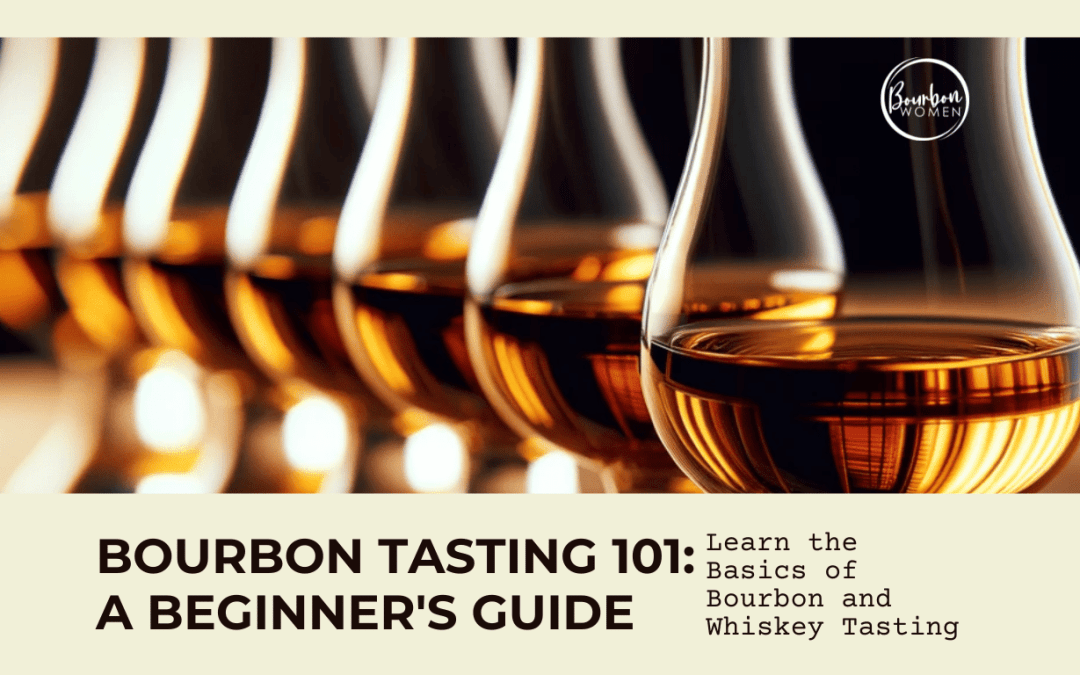Welcome to the World of Bourbon and Whiskey
You just started your bourbon journey, or you’re looking to upgrade your whiskey appreciation skills to be able to drink bourbon and talk about it with confidence. The first step in this is learning how to taste whiskey. It’s an adventure that goes far beyond simply drinking a spirit; it’s an exploration of history, culture, and craftsmanship, captured in each glass. You’re not just sipping whiskey; you’re unraveling stories, understanding traditions, and experiencing a craft refined over centuries.
The Art of Sensory Evaluation
At its heart, whiskey tasting is an art form that engages all your senses, transforming every sip into an intimate dialogue between you and the spirit. Think of your senses as a team of detectives, each with a unique skill set to uncover the mysteries of whiskey. Your eyes observe the color and texture, setting the stage for what’s to come. Your nose, the skilled scout, picks up nuanced aromas, hinting at the flavors hidden within. Then, your taste buds take center stage, dancing with the complexity of flavors that only whiskey can provide. Finally, the finish – a lingering impression that leaves a lasting memory, much like the final note of a symphony.
Why Sensory Evaluation Matters
For newcomers, the practice of sensory evaluation is like learning a new language, one that speaks through flavors, aromas, and textures. It’s about building a deeper connection with what you drink, transforming every tasting into a more meaningful and enjoyable experience. It’s a way to consume thoughtfully, and appreciate the artistry behind the whiskey in the glass. When you learn to evaluate whiskey, you’re not just expanding your palate; you’re opening a door to a vibrant world brimming with diversity and character. Each whiskey has its own personality, shaped by its ingredients, aging process, and the people who make it and celebrate it.
Join Us on This Flavorful Journey
As you embark on this journey, remember, there are no right or wrong impressions. Your palate is your own. Whiskey tasting is a personal experience, and what resonates with one person may differ for another. This step by step beginners guide is here to help you navigate this journey, offering you the tools and knowledge to deepen your appreciation and enhance your enjoyment of this storied spirit. So grab a glass, and let’s dive into the captivating world of whiskey together.
For those new to this bourbon and whiskey, this experience can be both exhilarating and enlightening. It may sound intimidating, but we can help with that. You don’t need to be a connoisseur or a seasoned whiskey buff to enjoy the nuances of a good bourbon. All it takes is a little guidance and a willingness to embark on this sensory voyage – and the willingness to sip bourbon and whiskey. Many times if needed. We know that’s probably not a hardship for you!
By honing your sensory evaluation skills, you’re not just drinking whiskey; you’re immersing yourself in a world of intricate details and subtle nuances. This journey of sensory discovery not only enhances your appreciation for whiskey but also helps in identifying those expressions that resonate most with your palate. Whether you’re a casual drinker or an aspiring connoisseur, the art of sensory evaluation is a gateway to a more enriched and personalized whiskey experience.
Getting Started with Whiskey Tasting
Choosing the Right Glassware

Selecting the appropriate glassware is a crucial first step in whiskey tasting, much like choosing the right canvas for a painting. The type of glass you use can significantly impact your sensory experience.
- The Glencairn Glass: Often considered the quintessential whiskey glass, its tulip shape is designed to concentrate the aromas towards the top, enhancing the nosing experience.
- The Tulip/Copita Glass: Often used by whiskey judges or sensory teams to evaluate whiskey, these are less common for consumers than the Glencairn glass.
- The Brandy Snifter: Similar to the Glencairn, the snifter also has a wide bowl with a narrower opening, ideal for capturing the aromas of whiskey. However, at times the wide shape of a brandy snifter contrates some of the harsher ethanol notes.
- The Highball Glass: While not typically used for tasting, it’s great for whiskey cocktails as it allows space for mixers and ice. We do not recommend this glass for tasting.
- The Rocks Glass: Also known as an Old Fashioned glass, it’s more suitable for enjoying whiskey neat or with a splash of water, although it doesn’t concentrate the aromas as effectively as the Glencairn or snifter. While it can be used, it is not ideal.
When starting, it’s beneficial to use a glass that enhances your ability to detect aromas, such as the Glencairn. This can make a significant difference, especially for beginners, in identifying the nuanced scents of different whiskeys. Look for a glass that has a bowl that is wider than it’s rim so that aromas are concentrated.
In addition, make sure that you are consistently using the same kind of glassware for tastings. The same whiskey may reveal different aromas or flavors based on the shape of the glass. When you’re just starting out, consistency is key to be able to develop your palate and nose.
Setting Up Your Tasting Environment

Creating the right environment is as important as the whiskey itself. The setting in which you taste can influence your perception and enjoyment. Here are a few tips to make it easier for your to evaluate and enhance your sensory experience with whiskey.
- A Quiet Space: Choose a calm and comfortable space free from distractions. Reducing background noise and activity allows you to focus on the sensory experience.
- Neutral Smells: Ensure the room is free from strong odors. Perfumes, food smells, or smoke can interfere with your ability to accurately nose the whiskey. To “reset” your nose, you might have some coffee beans available to nose briefly.
- Adequate Lighting: Good lighting helps you accurately observe the whiskey’s color and clarity. Natural, soft lighting is ideal. Have a sheet of white paper on hand to judge color and clarity.
- Comfortable Temperature: A comfortable room temperature is preferable. Extreme temperatures can affect both your sensory perception and the whiskey itself.
- Tasting Water: Have some room-temperature water at hand. It’s useful for cleansing your palate between different whiskeys and, if desired, to dilute the whiskey slightly to reveal more subtle flavors. The pros might have a pipette or water dropper, but a straw can easily be used to draw a few drops to add to a bourbon or whiskey sample.
- Have a Flavor Wheel Available: Find a bourbon or whiskey flavor wheel (or use the Bourbon Women one here) to help you narrow down on what you’re experiencing as you nose and taste.
Remember, whiskey tasting is a personal journey. While these guidelines can enhance your experience, feel free to adjust the setting to what suits you best, ensuring each tasting is both comfortable and enjoyable.
The Four Pillars of Whiskey Evaluation
1. Aroma: Understanding the Nose of Bourbon

Aroma plays a pivotal role in the whiskey tasting experience. Often referred to as “nosing,” this step involves deeply inhaling the scents released by the whiskey. The aroma can provide clues about a wide range of characteristics, from the type of cask used for aging to the ingredients.
- Technique: Gently swirl the whiskey in the glass to release its bouquet. Bring the glass to your nose and take a gentle sniff. Try with both nostrils open and then with one closed to compare the differences. Keep your mouth open slightly, it helps lessen the shock of high proof alcohol entering the nose and rotates the whiskey nose through the nasal cavity. Try wafting the glass beneath the nose, back and forth, making sure not to take too big of a smell. Higher proof spirits can wear out the nose, so be gentle in introducing the spirit to your nose.
- Identifying Aromas: Common aromas include vanilla, caramel, wood, fruits, spices, and floral notes. As you develop your nosing skills, you’ll start to identify more specific and subtle scents. It’s often helpful to have a bourbon flavor wheel on hand to help isolate aromas and flavor.
- Impact of Aging: The length of aging often influences the intensity and complexity of the aroma. Older whiskeys tend to have deeper, more developed aromas. But, it’s also possible for whiskies to be overly oaked or aged, so consider the age and any type of finishing barrels used when you evaluate the whiskey.
2. Appearance: Observing Color and Texture

The appearance of whiskey can tell you about its age, cask type, and even the distillation process.
- Color: Whiskey can range from light gold to deep amber. Generally, a darker color suggests longer aging or the use of certain types of casks, like sherry casks. Hold the whiskey up to the light and put it in front of a white sheet or paper or table cloth to assess its color.
- Clarity and Texture: Observe the whiskey against the light. Look for clarity and any visible textures. Legs or tears on the glass after swirling can indicate body and alcohol content. Can you read print through it? Is it bright? That can indicate clarity as you evaluate the appearance.
3. Flavor: Identifying Basic Taste Profiles

Flavor is arguably the most anticipated part of whiskey tasting. It’s where you’ll discover the complexity and depth of the spirit and it connects both the nose and the finish together with the whiskey itself.
- Basic Tastes: Sweet, salty, bitter, sour, and umami are the five basic tastes. Whiskey often exhibits sweet, bitter, or spicy profiles. Bourbon in particular can be sweeter than a rye whiskey, which often has a spicier profile.
- First Sip: Take a small sip and let it coat your mouth. Dont’ worry about evaluating that first sip. This just sets your palate to be able to drink a high proof spirit.
- Evaluating Sip This helps you to identify the primary flavors. Take a little larger sip and let the whiskey coat the inside of your mouth. Some folks like to roll it around the whole palate so the whole tongue and mouth is coated. If you’re having trouble identifying flavors, exhale with your mouth open. This often helps people distinguish flavors.
- Developing Palate: As you taste more whiskeys, you’ll start to distinguish between different grains, levels of sweetness, and the influence of the cask.
- Assess Body/Mouthfeel: As the whiskey moves through your mouth, see if it feels thin, creamy or oily. These descriptors often help you assess the mouthfeel – the sensation of where and how the spirit is hitting the mouth and the palate.
4. Finish: Recognizing the Finish
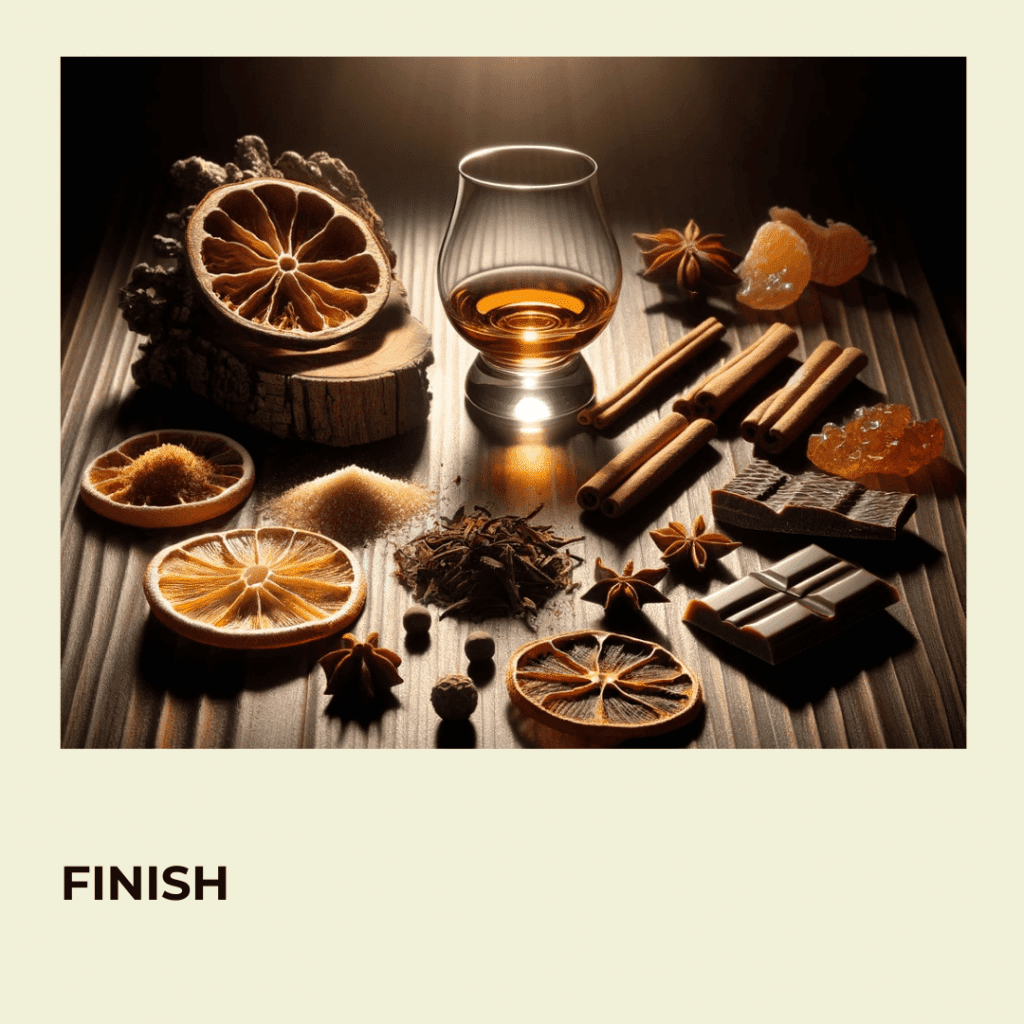
The finish is about the flavors that linger in your mouth after swallowing the whiskey. It can reveal nuances not evident in the initial taste.
- Length: A finish can be short, medium, or long. High-quality whiskeys often have a more extended, complex finish. Length can refer to how long the finish lasts, or how deep you experience it in your throat and chest.
- Characteristics: Pay attention to the evolving flavors and the overall balance. The finish might introduce new flavors or a change in intensity.
Each of these pillars – aroma, appearance, flavor, and finish – contributes to the overall whiskey tasting experience. Understanding and appreciating these aspects can greatly enhance your enjoyment and knowledge of whiskey. While this is an overall description of how to assess whiskey, focusing on one or another of these pillars at a time will help you grow in your sensory abilities.
The Tasting Process – A Beginner’s Guide
How to Properly Nose Whiskey
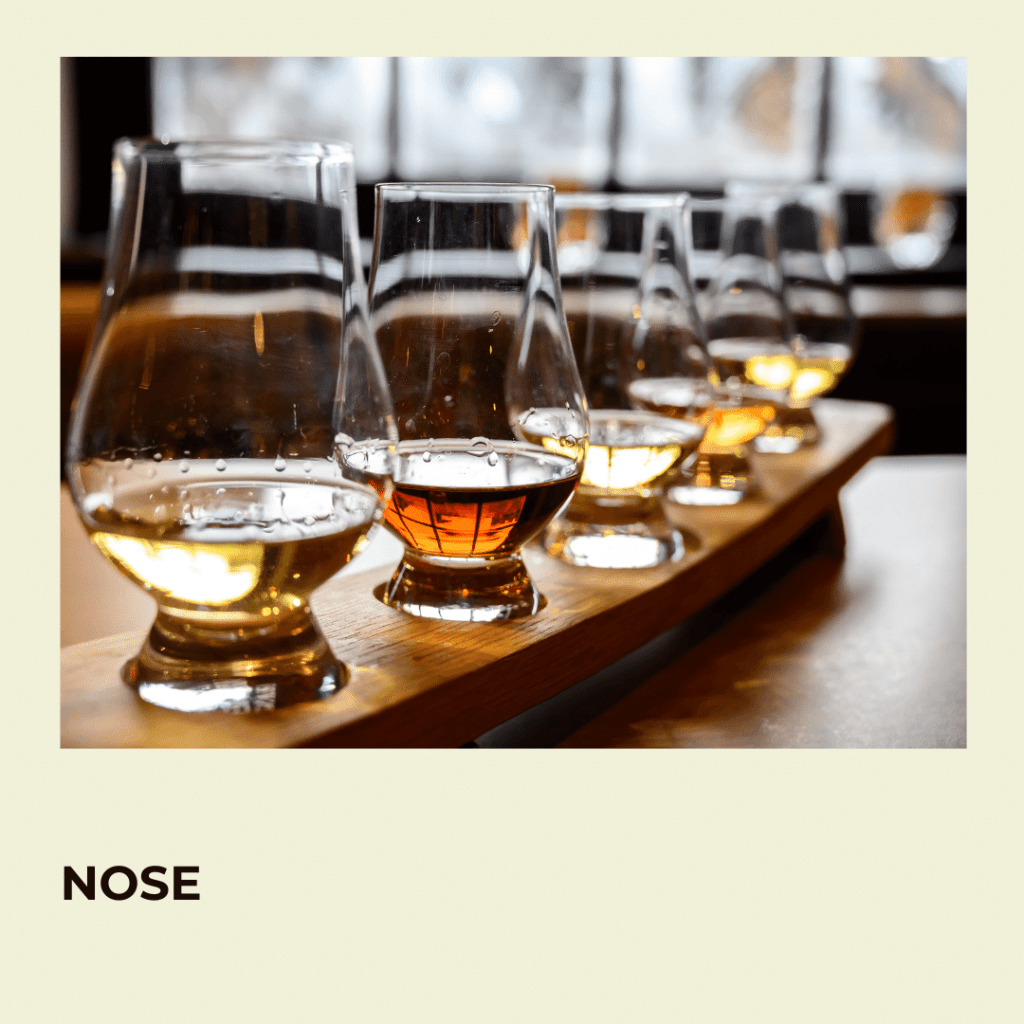
Nosing whiskey is like tuning an instrument before a concert; it sets the stage for the flavors to come. Here’s how to do it right:
- Start with a Small Swirl: Gently swirl the whiskey in your glass. This action releases its diverse array of aromas, much like opening a window to let in a breeze filled with various scents.
- The Approach: Bring the glass to your nose. First, sniff with your mouth slightly open. This technique helps in perceiving aromas more accurately, as smell and taste are closely linked.
- Go Slow: Don’t rush. Nosing is about savoring the aromas. Take your time to inhale gently, allowing your senses to absorb the different notes.
The Right Way to Sip Whiskey
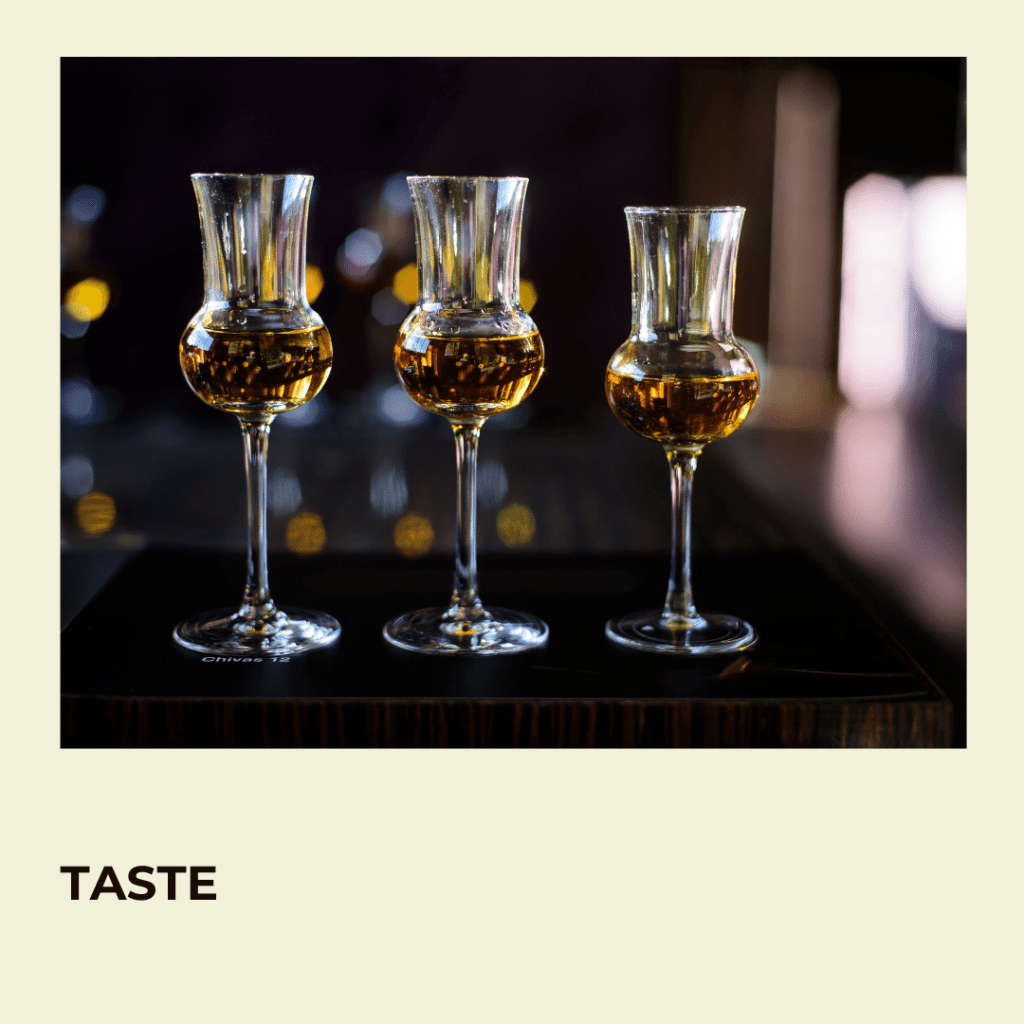
Sipping whiskey is an art, akin to listening to a piece of music note by note:
- Small Sips: Start with a small sip. This first sip can be shock to the palate, whiskey is high proof. Swallow the whiskey and don’t worry about analyzing that very first sip of teh whiskey. Now take a second small sip and let it roll around your tongue. Whiskey is like a symphony of flavors, and each part of your tongue picks up different notes.
- Savor the Moment: Hold the whiskey in your mouth for a moment. Think of it as letting a piece of chocolate slowly melt, unraveling its flavors.
- The Breath Technique: After swallowing, breathe out gently through your mouth. This technique helps in capturing the full range of flavors, as the act of breathing out enhances your ability to taste and rotates the air in your nasal cavity.
- Return to nosing for a bit, then sip again. Alternating between sipping and smelling often reveals an interplay of aroma and flavor that you won’t get from doing them one at a time. The nose and palate will slowly pick out hints of more flavors as you return to them.
Describing What You Taste
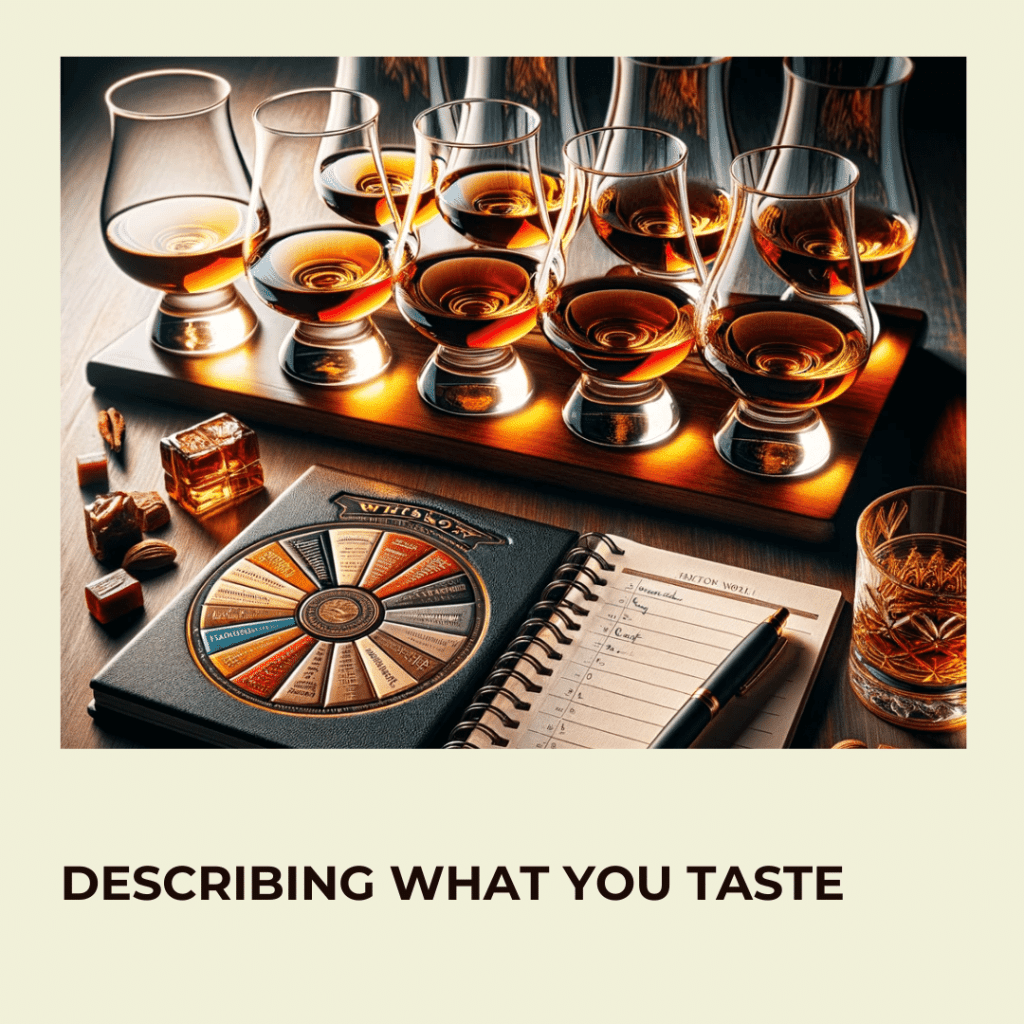
Describing the taste of whiskey is like painting a picture with words:
- Basic Descriptors: Start with basic terms like sweet, spicy, smooth, or harsh. These are your primary colors in the whiskey tasting palette. If something tastes slightly nutty, think about which nut it is, whether it’s a toasted, roasted or sugared nut. A flavor wheel is particularly useful here as you run down specific aromas and flavors from a general category to a very specific flavor or nose.
- Build Complexity: As you grow more comfortable, try to identify more specific flavors. Is that sweetness more like honey or caramel? Is the spice akin to cinnamon or pepper?
- Embrace Subjectivity: Remember, tasting is subjective. Your ‘oakiness’ might be someone else’s ‘smokiness.’ It’s about finding your own language to describe your whiskey experience. There is no wrong answer, we all have associations of aromas or flavors with memories that result in wildly different interpretations of specific flavors. But over time, you’ll be able to categorize what you’re experiencing in ways that others relate to.
Understanding these techniques lays a foundation for your whiskey tasting journey. Just like learning a new language, it might feel challenging at first, but with practice, you’ll soon start to appreciate the rich tapestry of aromas, flavors, and experiences that whiskey has to offer.
Common Observations in Whiskey Tasting
Identifying Basic Aromas and Flavors
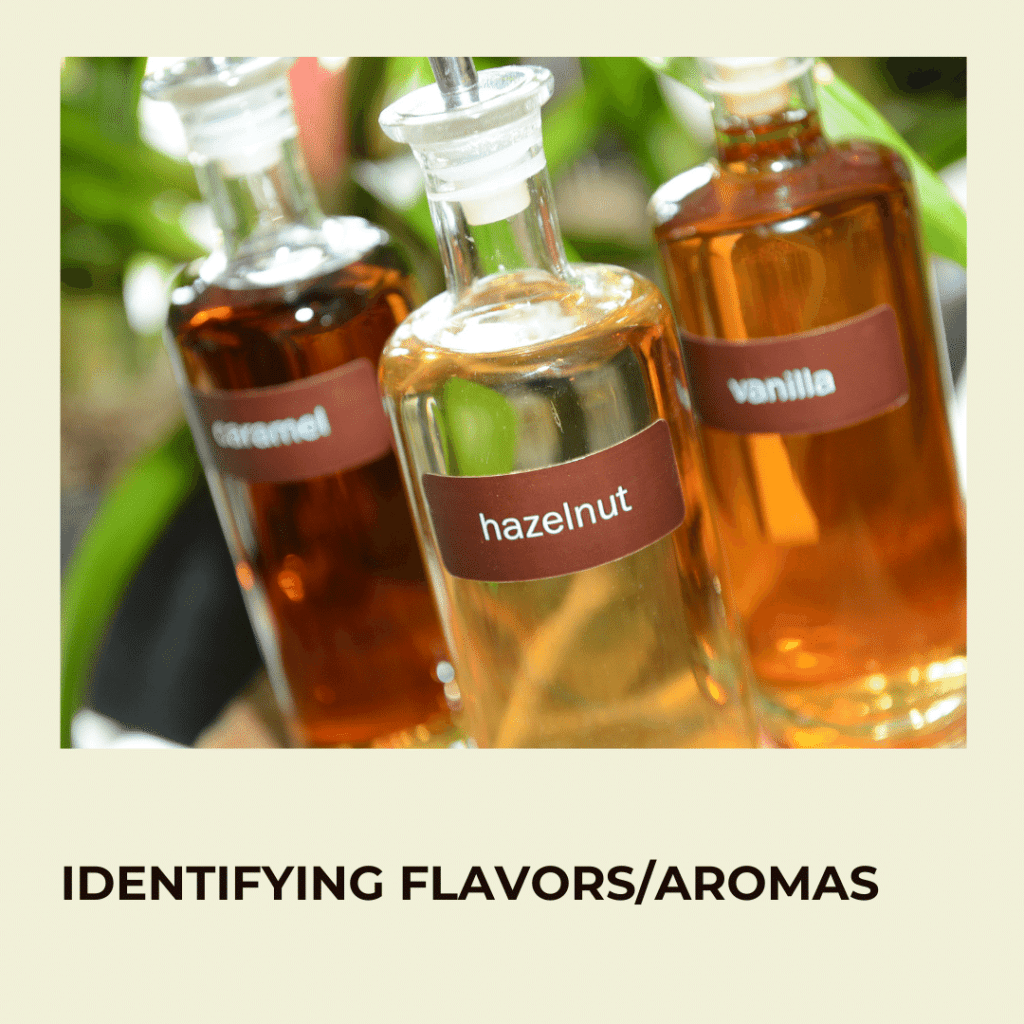
Whiskey tasting is like uncovering the layers of a rich tapestry, each layer revealing new scents and tastes.
- Aromas: Start by identifying broad categories like fruity, floral, spicy, woody, or nutty. Common scents include apple, vanilla, cinnamon, oak, and almond. It’s like sniffing through a spice rack or a fruit basket, picking out familiar scents.
- Flavors: On the palate, look for sweetness (honey, caramel), bitterness (dark chocolate, coffee), or spiciness (pepper, ginger). The flavors in whiskey can be as varied and complex as the ingredients in a gourmet dish.
Recognizing the Influence of Aging and Barrels
- Aging and the type of barrel used play a significant role in shaping a whiskey’s character, much like how time and environment influence the growth of a tree.
- Aging: Generally, longer aging imparts deeper flavors and smoothness. Think of it as letting a stew simmer, developing richness over time.
- Barrel Type: The type of barrel (oak, sherry, bourbon, etc.) can add specific flavors. Sherry casks might lend fruity notes, while bourbon barrels often give vanilla and toffee hints.
Basic Vocabulary for Describing Whiskey
Having a basic vocabulary for describing whiskey is like having a painter’s palette – it gives you the tools to express what you’re experiencing.
- Simple Descriptors: Use simple words like, rich, light, or robust. These are the primary colors of your tasting palette. Avoid the word smooth, it’s a generic term that doesn’t add much to evaluation of the whiskey.
- Be Specific: Try to be as specific as possible. Instead of just saying “fruity,” specify whether it’s more like citrus fruits or dark fruits. Dive into specific fruits, or whether it’s dried, fresh, sugared, cooked.
- Sensory Analogies: Use analogies to convey experiences. Saying a whiskey “has a bite like a crisp apple” can vividly convey your experience to others.
By familiarizing yourself with these common observations, you’ll start to navigate the world of whiskey with greater ease and enjoyment. Each tasting is a step forward in developing your palate and deepening your appreciation for this storied spirit.
Keep a Whiskey Tasting Journal
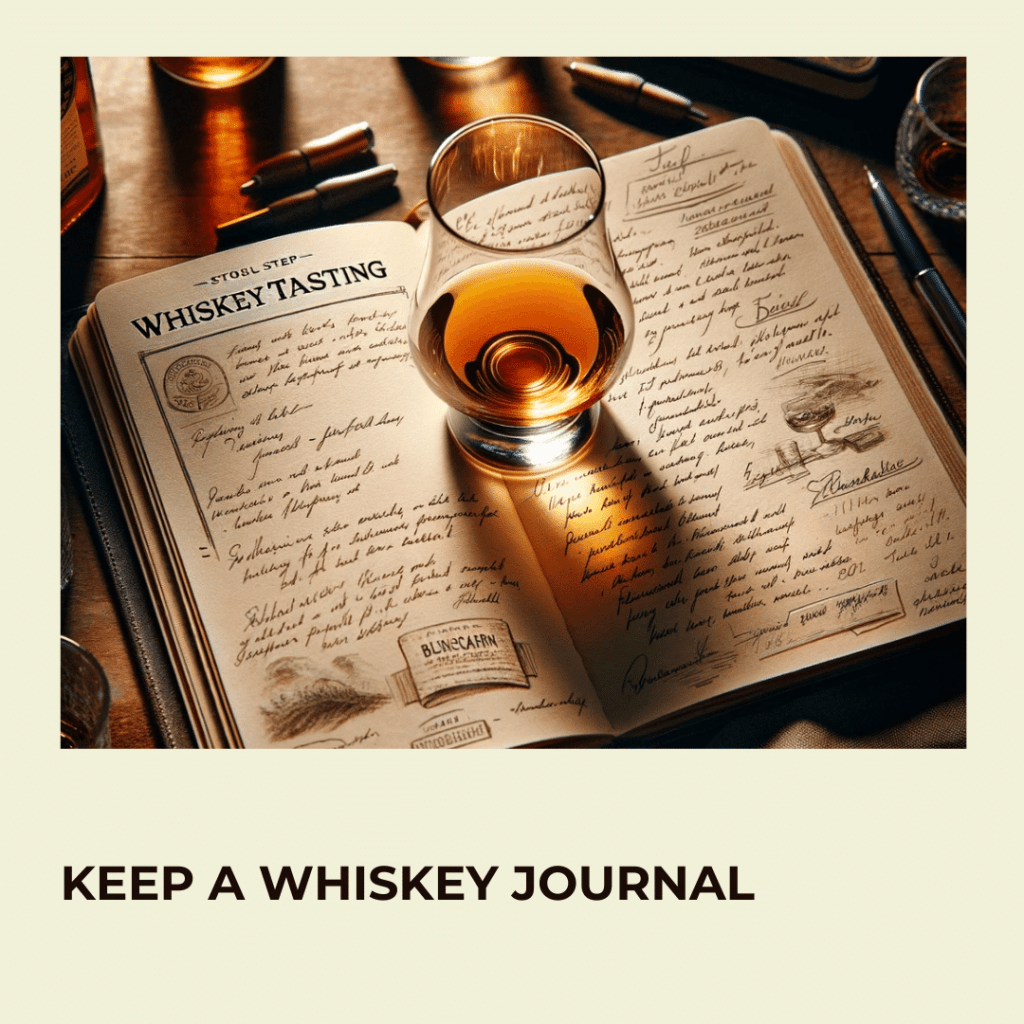
Record Your Impressions
Like an explorer jotting down discoveries in a journal, recording your whiskey tasting experiences is invaluable.
- Record the Basics: Name, distillery, proof, age, and any additional information you have like mashbill, method of production or secondary finishing.
- Record Initial Thoughts: Note your first impressions on aroma, flavor, and finish. These are often the most instinctive and genuine.
- Detailed Observations: Next. write down the specifics – the colors, the scents, the flavors, and the textures you notice. It’s like sketching a detailed map of each whiskey’s unique landscape.
- Reflections: Include your overall experience. Was it enjoyable? Did it remind you of something? Sometimes a whiskey might take you down memory lane, evoking nostalgia.
Tracking Your Whiskey Journey
Your whiskey journal is a logbook of your journey through the world of spirits.
- Comparisons: Over time, you can compare different whiskeys, observing how your palate and preferences evolve. It’s like comparing different routes taken on various adventures. This helps you learn what you like, and gives you a way to communicate that to other whiskey drinkers and bartenders so they can help you choose a great bourbon.
- Growth: Track how your ability to identify and appreciate complex flavors grows. It’s akin to watching a garden you’ve planted flourish over time.
- Favorites: Keep a record of your favorite whiskeys and why you like them. This can be a handy reference for future purchases or recommendations.
Keep Sipping and Explore Further
You’ve now begun your journey into the art of whiskey tasting. Remember, it’s about engaging your senses, understanding the nuances, and appreciating the craftsmanship that goes into each bottle.
Just like any new skill, whiskey tasting takes practice and patience. Each bottle of whiskey is a new chapter in a vast and varied storybook. Be curious, be open to new experiences, and don’t be afraid to trust your instincts. The world of whiskey is rich and diverse, and there’s always something new to discover. So raise your glass to the journey ahead – here’s to exploring the wonderful world of bourbon!

